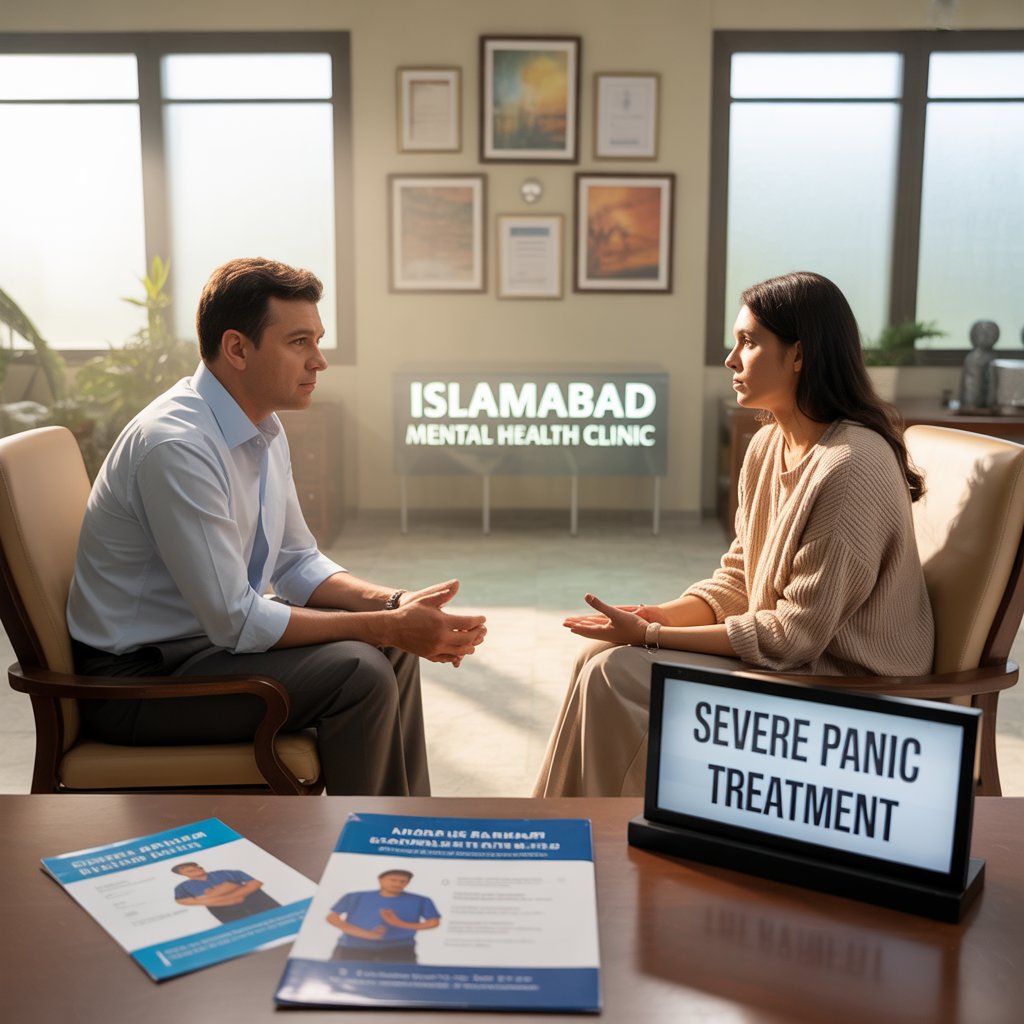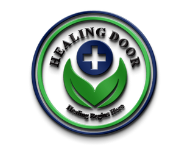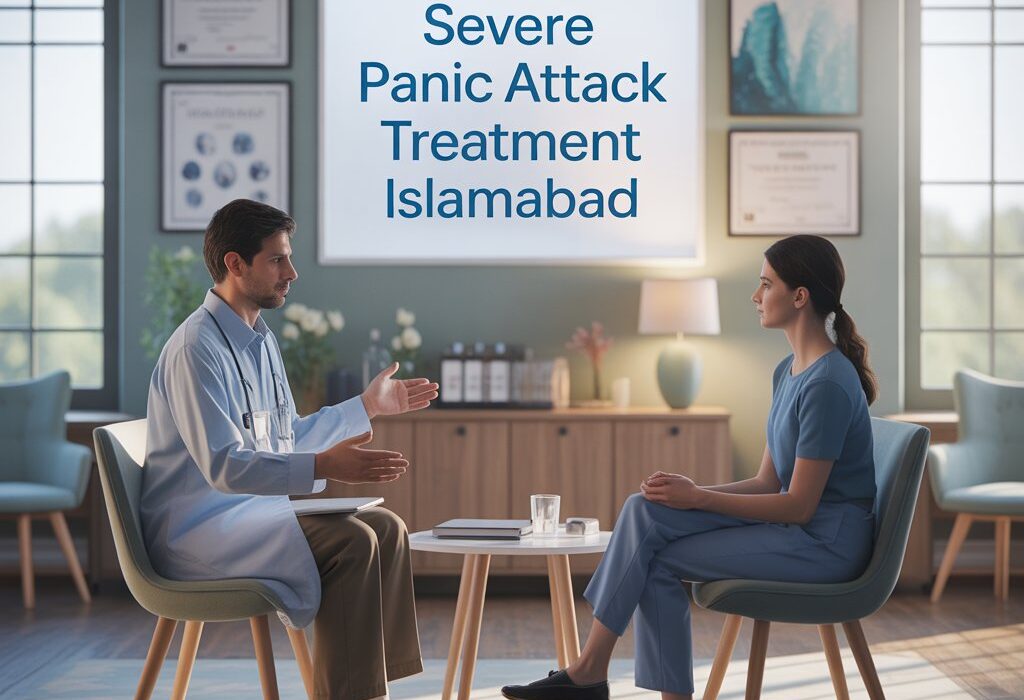Severe Panic Attack Treatment Isb: A Path to Calm
Experiencing a severe panic attack can be one of the most terrifying events in a person’s life. The overwhelming surge of fear, accompanied by physical symptoms that feel like a heart attack, can leave you feeling helpless and desperate for answers. If you are searching for effective severe panic attack treatment Isb, it is crucial to understand that you are not alone, and more importantly, what you are experiencing is highly treatable. This guide aims to illuminate the path toward recovery, detailing the professional interventions and strategies that can help you reclaim a life free from the shadow of panic.
Understanding the nature of a severe panic attack is the first step toward healing. A panic attack is not simply intense anxiety; it is an abrupt, acute episode of overwhelming fear and discomfort that peaks within minutes. During an attack, the body’s “fight-or-flight” response is triggered erroneously, leading to a cascade of distressing physical and psychological symptoms. Recognizing these signs is key to seeking the right help.
Recognizing the Signs: More Than Just Fear
While each person’s experience is unique, a severe panic attack often involves a combination of intense symptoms. These can create a terrifying feedback loop, where the fear of the attack itself worsens the physical sensations. Common symptoms include:
- Heart palpitations, a pounding heart, or an accelerated heart rate.
- Sweating, trembling, or shaking.
- Sensations of shortness of breath or smothering.
- Feelings of choking, chest pain, or discomfort.
- Nausea or abdominal distress.
- Dizziness, lightheadedness, or feeling faint.
- Derealization (feelings of unreality) or depersonalization (feeling detached from oneself).
- Fear of losing control or “going crazy.”
- An intense fear of dying.
- Numbness or tingling sensations (paresthesia).
- Chills or hot flushes.
When these episodes are recurrent and lead to persistent worry about having more attacks or significant maladaptive changes in behavior, a diagnosis of Panic Disorder may be considered. Consequently, professional severe panic attack treatment Isb becomes essential to break this cycle.
The First Step: Seeking a Professional Diagnosis
Before effective treatment can begin, a proper diagnosis from a qualified healthcare professional is imperative. It is important to rule out other medical conditions that can mimic panic symptoms, such as thyroid issues or cardiac problems. A mental health professional, such as a psychiatrist or clinical psychologist, will conduct a comprehensive assessment. This evaluation typically involves a detailed discussion of your symptoms, their frequency, their intensity, and the impact they have on your daily life. This collaborative diagnostic process ensures that your severe panic attack treatment Isb is tailored precisely to your individual needs and circumstances.
A Multimodal Approach to Severe Panic Attack Treatment

There is no single “magic bullet” for treating severe panic attacks. Instead, the most effective strategy involves a multimodal approach that combines psychotherapy and, when appropriate, medication. This comprehensive method addresses both the immediate symptoms and the underlying triggers of panic.
1. Psychotherapy: The Cornerstone of Long-Term Recovery
Psychotherapy, particularly Cognitive Behavioral Therapy (CBT), is considered the gold standard for severe panic attack treatment Isb. CBT is a practical, goal-oriented therapy that helps you understand the connection between your thoughts, feelings, and behaviors. In the context of panic attacks, it focuses on two key areas:
- Cognitive Restructuring: This process involves identifying, challenging, and reframing the catastrophic thoughts that fuel panic. For example, the thought “My heart is racing, I’m having a heart attack!” is reframed to “This is a normal panic symptom. It is uncomfortable, but it is not dangerous and will pass.”
- Interoceptive Exposure: This is a crucial component where you are safely and gradually exposed to the physical sensations of panic in a controlled environment. Exercises may include spinning in a chair to create dizziness or breathing through a thin straw to simulate breathlessness. Through repeated exposure, the brain learns that these sensations are not threatening, thereby reducing the fear-of-fear response.
Other therapeutic modalities, such as Mindfulness-Based Stress Reduction (MBSR), can also be highly beneficial. MBSR teaches individuals to observe their thoughts and physical sensations without judgment, reducing the struggle with anxiety and promoting a calmer state of being.
2. Medication Management: Providing Biochemical Support
In cases of severe and frequent panic attacks, medication can be a vital component of the treatment plan. Medications are not a cure, but they can significantly reduce the intensity of symptoms and create a stable foundation from which you can effectively engage in psychotherapy.
- Selective Serotonin Reuptake Inhibitors (SSRIs) and Serotonin-Norepinephrine Reuptake Inhibitors (SNRIs), types of antidepressants, are often the first-line pharmacological treatments due to their efficacy and safety profile.
- Benzodiazepines are fast-acting sedatives that can provide immediate relief during an acute panic attack. However, because of their potential for dependence and tolerance, they are typically prescribed only for short-term or emergency use.
All medication decisions must be made in close consultation with a psychiatrist who can monitor progress and manage any side effects. The integration of medication with therapy often yields the most robust and sustainable results.
Lifestyle Modifications: Building a Foundation for Resilience
While professional treatment is essential, certain lifestyle changes can powerfully support your recovery by strengthening your body’s resilience to stress. These should be viewed as complementary to, not a replacement for, professional care.
- Regular Exercise: Physical activity is a powerful anxiety reducer. It helps metabolize excess stress hormones like adrenaline and cortisol and promotes the release of endorphins, the body’s natural mood elevators.
- Prioritizing Sleep: Sleep and anxiety have a bidirectional relationship. Poor sleep can exacerbate anxiety, and anxiety can disrupt sleep. Establishing a consistent sleep routine is fundamental to managing panic.
- Diet and Nutrition: Reducing or eliminating stimulants like caffeine and sugar can have a dramatic impact on anxiety levels, as they can directly trigger or worsen physical symptoms like a racing heart and jitteriness.
- Breathing and Relaxation Techniques: When practiced regularly, diaphragmatic breathing and progressive muscle relaxation can activate the body’s parasympathetic nervous system (the “rest-and-digest” response), directly counteracting the physiological arousal of a panic attack.
Creating Your Safety Plan: What to Do During an Attack
Even during treatment, a panic attack may occur. Having a concrete safety plan can empower you and reduce the fear of future episodes. Your plan might include:
- Acknowledging the attack without judgment: “This is a panic attack. It is not dangerous, and it will pass.”
- Focusing on your exhale, making it longer than your inhale.
- Grounding yourself using the 5-4-3-2-1 technique: Name 5 things you can see, 4 things you can feel, 3 things you can hear, 2 things you can smell, and 1 thing you can taste.
- Reaching out to a trusted support person.
Taking the Next Step Toward a Calmer Future
Living in fear of the next panic attack is no way to live. The journey to recovery requires courage, but it is a journey you do not have to make alone. By seeking out professional severe panic attack treatment Isb, you are taking a powerful step toward breaking the cycle of panic. With the right combination of evidence-based therapy, potential medication management, and supportive lifestyle changes, you can learn to manage your symptoms effectively. Ultimately, you can regain control and build a future defined not by fear, but by peace and possibility.
Frequently Asked Questions (FAQs)
1. What is the most effective therapy for severe panic attacks mentioned in the article?
The article highlights Cognitive Behavioral Therapy (CBT) as the gold standard for severe panic attack treatment. CBT is effective because it directly targets the core of the problem by teaching you to identify and reframe catastrophic thoughts (cognitive restructuring) and safely desensitize you to the physical sensations of panic through interoceptive exposure, thereby breaking the fear cycle.
2. Are medications a necessary part of the treatment plan?
Medications are not always necessary, but they can be a vital component for many individuals, especially in severe cases. The article explains that medications like SSRIs or SNRIs can reduce symptom intensity and create a stable foundation for you to engage more effectively in psychotherapy. The decision is always made collaboratively with a psychiatrist based on your specific needs.
3. I feel fine between attacks. Why do I need ongoing treatment?
This is a common experience. The article explains that the goal of treatment is not just to manage an acute attack but to break the underlying cycle of “fear-of-fear.” This means addressing the persistent anxiety about having another attack, which often leads to behavioral changes and a diminished quality of life. Ongoing treatment helps you build long-term resilience and prevent future episodes.
4. Can lifestyle changes really make a difference with something this severe?
Yes, absolutely. While lifestyle changes are not a replacement for professional treatment, the article emphasizes they are a powerful supportive component. Regular exercise, prioritizing sleep, and reducing caffeine intake help regulate your nervous system and build your body’s resilience to stress, making you less vulnerable to the triggers that can initiate a panic attack.
5. What should I do immediately if I feel a panic attack starting?
The article recommends having a concrete safety plan. Key immediate steps include first acknowledging the attack without judgment, reminding yourself it will pass. Then, focus on lengthening your exhale to calm your nervous system. You can also use a grounding technique like the 5-4-3-2-1 method to shift your focus away from the internal panic and back to your external environment.


